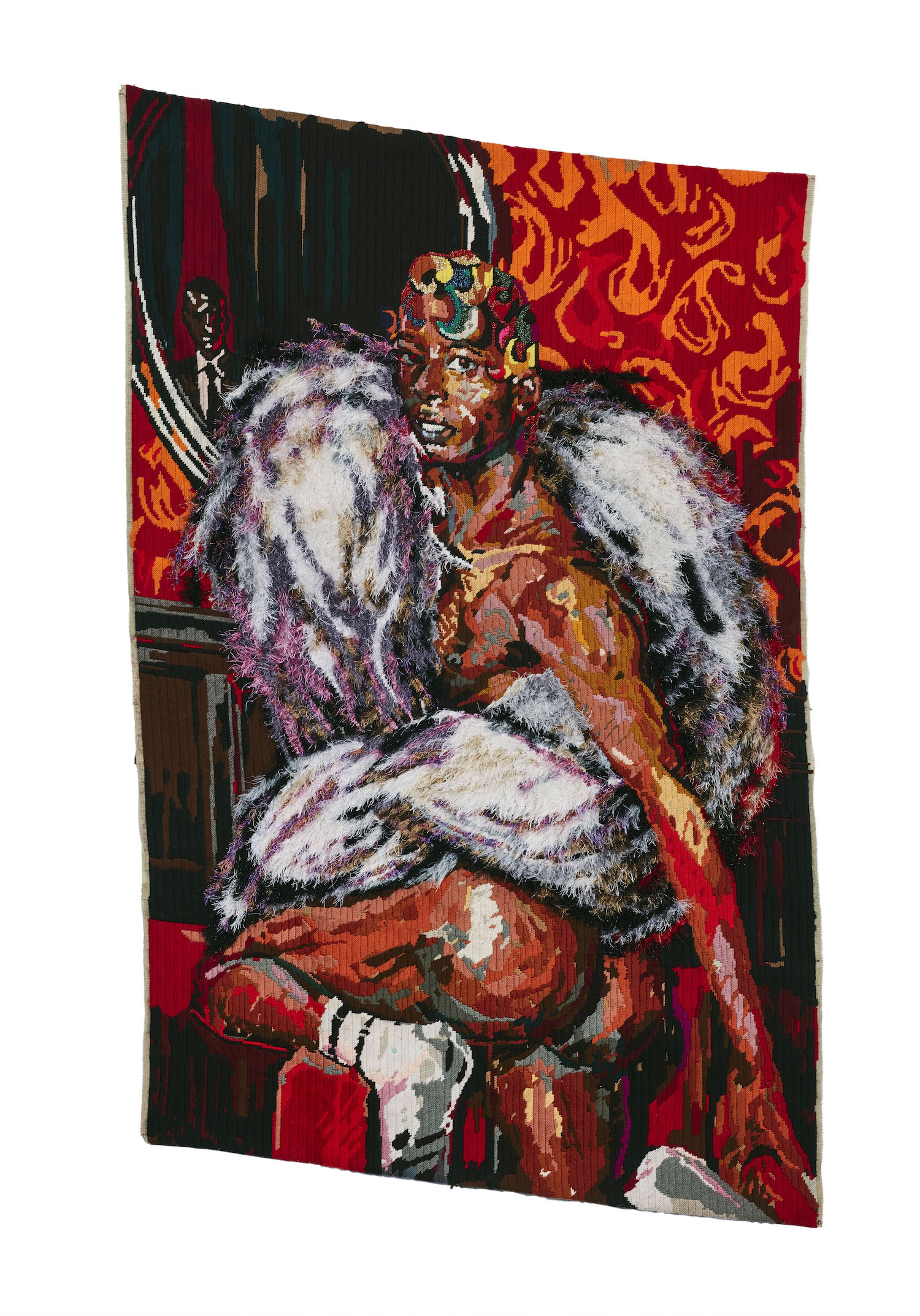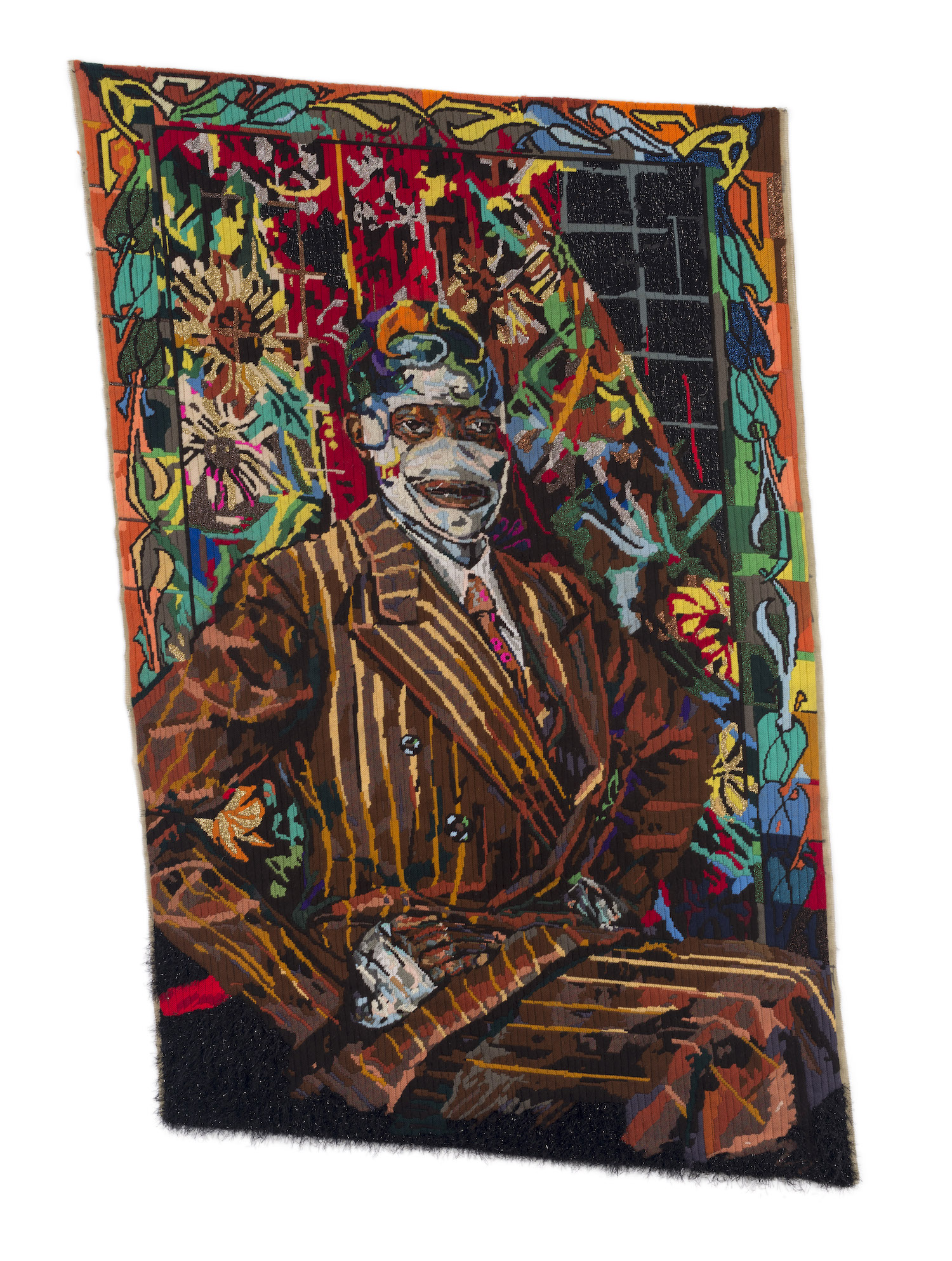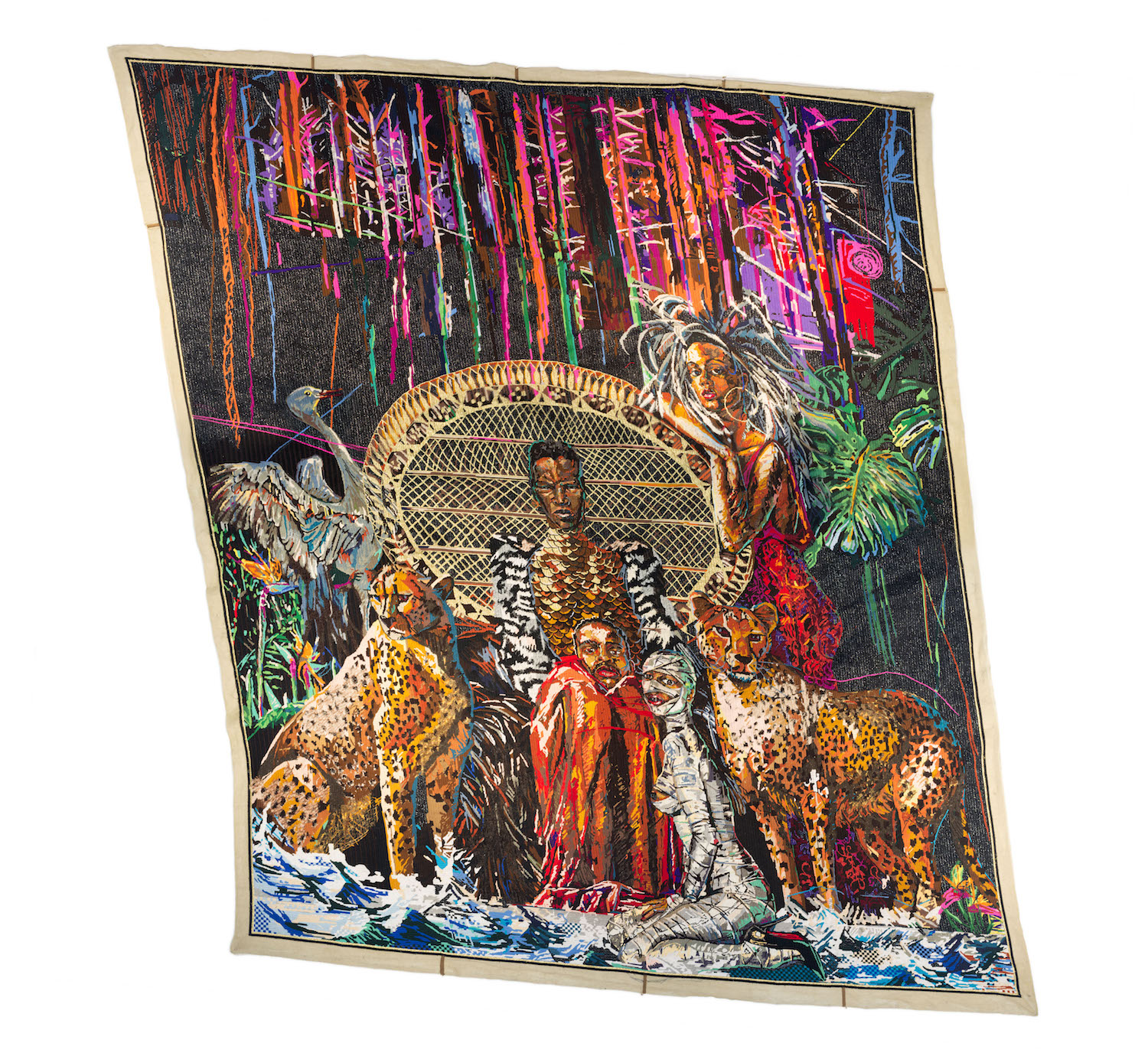Of Gods, Rainbows and Omissions marks artist Athi-Patra Ruga’s first major solo exhibition in the UK. The show that is taking place in the South Wing of Somerset House holds the promise to unveil a dreamlike utopia of myth and its astonishing avatars. An amalgamation of three recent series is shown for the first time indicating his diverse practice. The show includes sculpture, drawing, handcrafted petit point tapestry, photography and film. “An allegory of post-apartheid political, cultural and social systems, and a shimmering vision of a more humanist future” immerses viewers in Ruga’s bright world.
I caught up with Athi-Patra to find out more about the show:
The show will include work from three recent series, which are these series? It is expressed that this is new work, are there any differentiating elements in your approach to this new body of work and show? What can audiences expect to see that will be different from other solo shows you have had thus far?
With ‘Of Gods, Rainbows and Omissions’ we are bringing together for the first time in London a survey of all the avatars and the respective bodies of work. This is a different way of presenting as it is a step from doing flagship solos and art fairs, which tend to have a limited amount of pieces. Those pieces and their mediums: in this case video, performance, tapestry in petite point and a new sculpture that is part of the latest series in continuum.
Could you elaborate a bit more on the characters that you create and embody? Who are they? What are their stories and message?
I prefer to call them Avatars, as they are in essence a tool I use to enter conversations that I as the artist could not do in civvies, for self-preservation, costume and the persona come in. In this show the audience shall be introduced to The Future White Women of Azania, festooned in Rainbow balloons and trying to negotiate their citizenship in MY Azania. We are then introduced to the constitution and heraldry of this imagined safe space [or utopia], the national animal is a Sabre-tooth zebra a result of a fracking operation gone wrong in the Old Azania, we have a national flower… that is an anthropomorphic exercise. The Elder [performed by the artist] and the versatile queen Ivy in Exile.

How did you come to the decision to include such a vast expanse of practice in this show (drawing, sculpture, film & photography)? How do these various elements speak to one another in the show?
The past ten years of character making laid the perfect ground for me to be able to propose the “reunion” of my avatars.
It is stated that you project a vision of a more humanist future with your work, could you please elaborate on what this future looks like, or ideally what you wish this future to be?
The humanist drive in my work, you can say, is firstly about recovering my and my allies’ memories who have been targets of historical/aesthetic omission for the most part of the modernism exercise. To display our contribution to said modernism and in return I feel that welcomes someone who is foreign to those knowledge systems to appreciate and maybe they are able to share their “civilization” too.
The objects I make are counter proposals to the situations of today where society is imagining new futures for itself. I’m simply proposing new monuments, new tableaus. My wish for the future is where art becomes a tool for courage. For now, and the future. Art wise, I imagine a creative industry that will take care of all its stakeholders: from the underpaid intern to the secondary art market.
Could you please tell me more about how you came to the idea of speaking about the post-apartheid era via myth and allegory? When did these explorations begin in your practice initially?
I was 10 in 1994 and in retrospect I feel that we were subjected to a social cohesion exercise that omitted peoples lived traumas and also having travelled with my father who was a journalist covering the TRC at that time… I feel conversation was more about truth than reconciliation (if indeed we want that). We are a nation hooked on shock: however, it could be a mistake to think that revealing truths is the solution …the healing procession stays there without resolution. This is frustrating and we take it out on each other. Miss Congo, Beiruth, Injibhabha, Ilulwane, the pantheon of the Azania that I intentional[ly] subvert and counter propose is a response to this stillbirth of a nation. As they speak to the past 15years of what the black femme body has been subjected to which is not very Simunye…
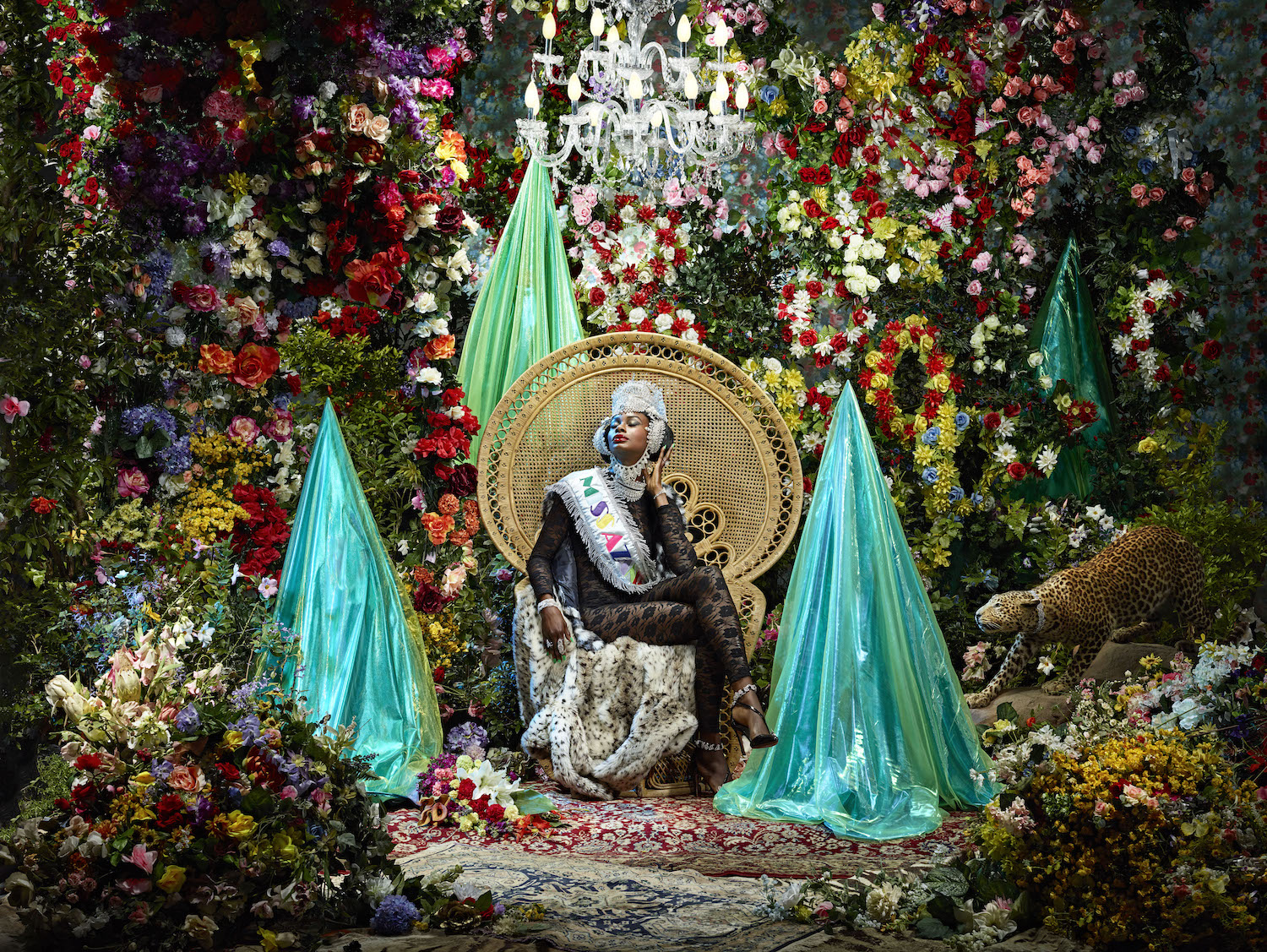
Could you please unpack the more humanist future you envision and how that is connected to the theme of utopia that recurs in your practice?
The most humanist act is letting your civilization shine for the world to see… I’m getting worried [about] Utopia, coz one has to guard it and employ xenophobia, exclusive nationalism and population control to keep its dream alive. Also, its nature usually brings my attention to the lack that is in the contemporary. I counter propose the word safe space, as that takes me back to the gay clubs of my younger days where for 6 hours you had this community (that mind you, also uses misogyny and materialist classism to protect its borders in some cases).
What do the ‘Omissions’ in the title of the show refer to? What is being omitted?
Primitivism is a sore point in black art history but also at the same time [it is] the moment when the black performer and artists begins a long journey for their agency away from the gaze …and getting paid for it. In this exhibition, we touch on that sore point, the double-edged sword that is our participation and central position in the modernist imaginarium. We beatify Feral Benga who after ww1 moved from Senegal to Paris and then to Harlem. He used to do drag parodies of Josephine Baker, and this blows my mind that we through our academic homophobia do not get to learn this… learning this gave me courage to claim part of the modernists arch and not to rest on the narrative of Picasso’s masks or human zoos.
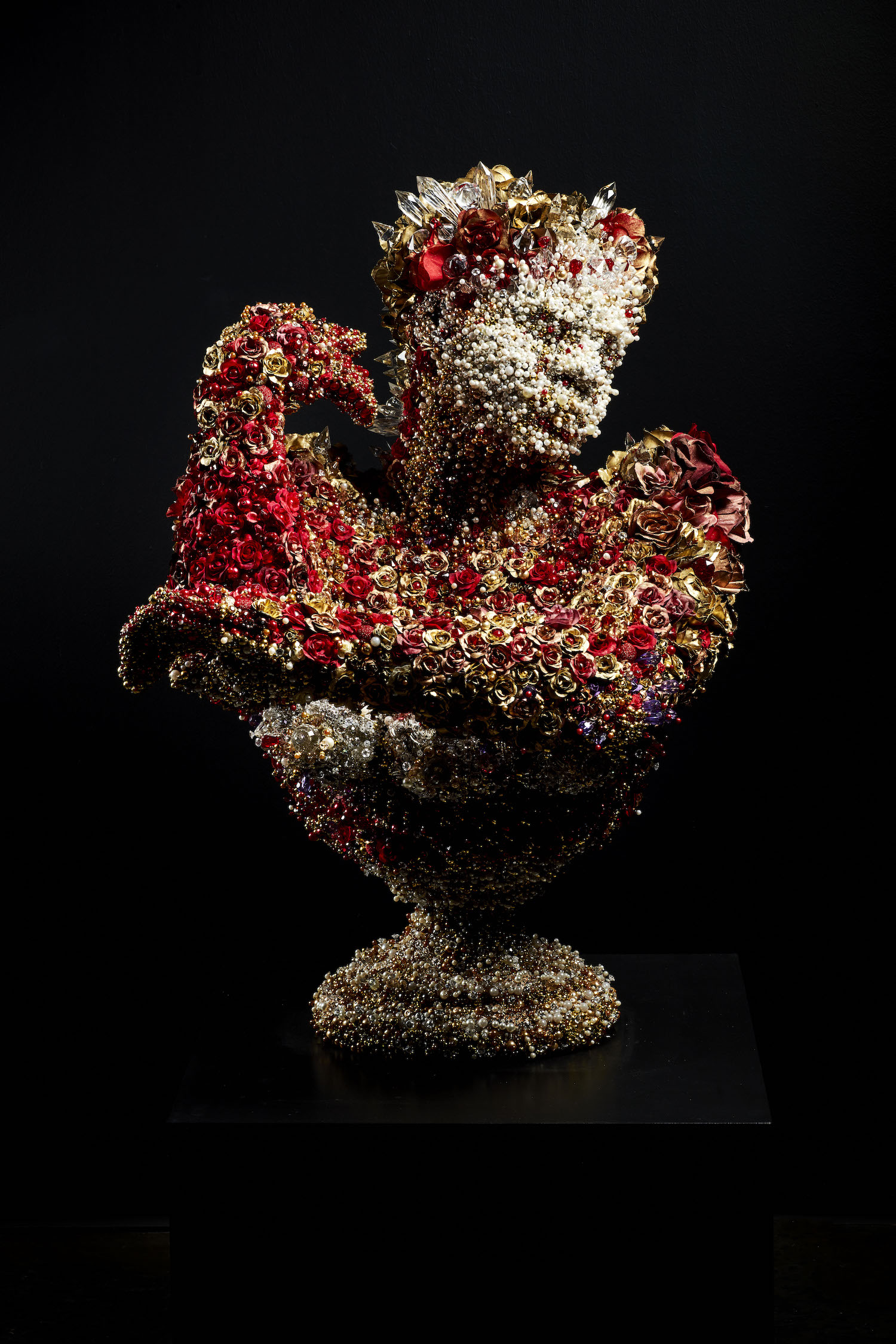
Could you tell me more about your practice? How do you set out to create work from the initial idea to the completion of a work? How long does it normally take you to complete a single work? How are avatars developed?
It starts with a question or an emotion that is beyond my capacities as a civvie. It then strictly requires me to develop an avatar that is a reply or a console to such. That process takes experience and it is put to paper. Drawing is king, even stickmen. I then decide on who the audience is as that informs the leitmotif and importantly the medium. An art is never finished so I like living in the process of creating serial work as then you start having a conversation that you can always pick up on.
What is it that you hope to inspire through your art?
Courage to have clarity about how to respond to circumstances and especially traumatic ones. From that I feel a liberation comes from whoever or whatever dares to define your greatness.
What excites you about this show in particular?
As the work comes from the studio, I have seen it before. It ranges from people’s interaction with the media and the stories they leave with. Above all I cherish the conversation I shall be having. We delivered to a packed auditorium at the Oxford Brooke’s school with artist academic Linda Stupart (we’ve been in conversations since I was like 21.) And Ekow Eshun will be in convo with me and Zarina Mohammed from THE WHITE PUBE will close my talks tour. This is beyond exciting and important.
Of Gods, Rainbows and Omissions will be on show from 4 October 2018 – 6 January 2019. For more info visit the Somerset House website.
* Somerset House, in partnership with 1-54 Contemporary African Art Fair and The Charles Russell Speechlys Terrace Room Series
